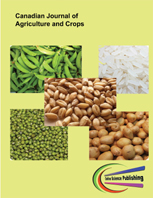Single Screw Extrusion Processing of Enriched Snacks at Various Levels of Brewers Spent Yeast and Soybean Meal
DOI:
https://doi.org/10.20448/803.5.2.124.137Keywords:
Non-wheat, Composite flour, Defatted, Functional properties, Proximate composition.Abstract
In the current years, the significance of a healthful diet, dietary composition, and food quality has been gradually heightened because of more and more conscious of the health-promoting constituent of foods by consumers. Thus, the study examined the production of enriched ready-to-eat snacks through extrusion from composite non-wheat based cereal flour of yellow maize. All raw materials were obtained from local markets across Ondo and Osun states markets after which they were sorted, cleaned, dried and milled into a powder. Samples were formulated in the following ratios (yellow maize/ defatted soy flour/ brewers’ spent yeasts): 35:30:10 (YMDS), 35:25:15 (YMDD), 35:20:20 (YMDB), 35:10:30 (YMDF) and they were compared with a wheat-based market snack which was the control. The functional, proximate, minerals, antioxidant and sensory properties of the snacks were analysed using standard methods. Results on dry basis established that an increase in brewers’ spent yeast substitution in the formulation significantly (p≤ 0.05) increased protein (23.07 - 26.84%) and carbohydrate (43.26 – 74.73 %) contents. While crude fibre (5.50-6.69%), ash (8.71-8.86%) and fat contents (13.37-17.85%) significantly increased with defatted soy substitution (p ≤ 0.05). However, total phenol, ascorbic acid, and total flavonoid contents also increased significantly with defatted soy flour substitution. Finally, no significant difference (p≤ 0.05) among all the sample appearance, taste, aroma, and texture (crispness) and sample (YDMF) favourably compared with a market snack in the sensorial properties evaluated and was generally more accepted.


